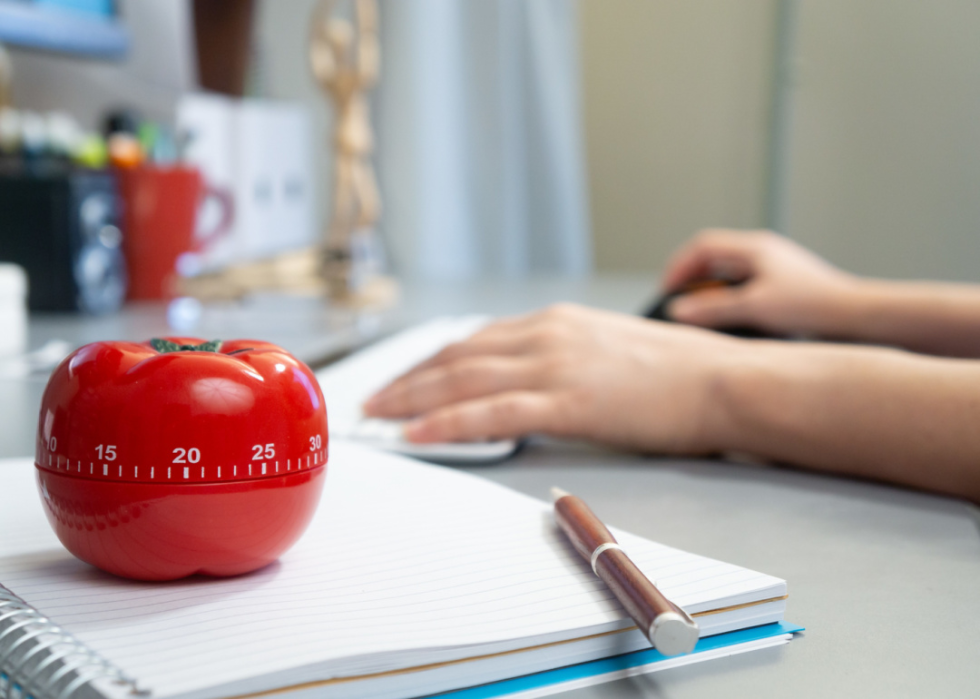
5 effective studying methods for every kind of student
This story originally appeared on Numerade and was produced and distributed in partnership with Stacker Studio.
5 effective studying methods for every kind of student
Learning anything requires practice and repetition, but it can take time to figure out an effective way to do it. Everyone learns differently, and there are many different studying techniques available—but how do you find the one that works for you?
Numerade outlined five study techniques, the cases in which they're useful, and the types of students who will excel using these methods.
Many students may benefit from a combination of these studying methods. According to a 2021 study in the journal CBE: Life Sciences Education, college students who not only spent more time using active studying strategies but also used multiple strategies had higher exam scores than those who used fewer and more passive strategies. Active studying methods move beyond the passive studying methods of reading and listening and help students engage with the content in a way that encourages further processing. Choosing multiple active strategies allows students to tailor their studying methods to fit their needs.
When students understand their learning style, they can best decide which study method is most conducive for absorbing and retaining information. One method that's not effective for anyone, however, is cramming. MIT researchers explained in a Washington Post article that spending the night before a test trying to memorize everything you need to know for the exam won't help students actually retain the information. Instead, students can evaluate their learning style, preferences, strengths, and weaknesses to figure out which studying methods are most effective for them.

Cornell note taking
Cornell University education professor Walter Pauk developed the Cornell note-taking system to help students capture facts they read or hear in lectures, discover the ideas within those facts, and turn that into personal knowledge.
This longhand method uses a piece of paper divided into four sections: a small space at the top for the topic and date, a narrow column on the left called "cue," a wider column on the right labeled "notes," and a small section that runs across the entire width at the bottom of the paper called "summary."
During study, students can write short facts in the "notes" section and write questions for themselves in the "cue" section. This strategy keeps their brain active while studying and helps them analyze and organize what they're learning in real-time.
As soon as possible after a study session or lecture, students write a couple of sentences about what they've learned in the summary section to cement what they've studied and create a through line for study sessions and lectures.

Pomodoro technique
Procrastinators, people who struggle with focus, and those with multiple deadlines simultaneously can benefit from the Pomodoro technique, a time management tool. Consultant Francesco Cirillo named it after his tomato-shaped kitchen timer, using the Italian word for tomato.
This technique involves settinget a timer for 25 minutes and using the time to focus on the task at hand. After 25 minutes, students take a five-minute break, then do another round of focused work. After four rounds, also called pomodoros, take a longer, 20-to-30-minute break.

Leitner system
Based on a concept called spaced repetition, the Leitner system helps students focus on information they don't know versus spending time repeating information they do know. It's a great way for students to prepare for tests, but it does require at least two weeks, so it's not ideal for trying to prep for a test that's in a few days.
The system uses flashcards and at least three boxes—or some way to contain the cards. One box is for every-day review, one is for every-other-day review, and one is for weekly review.
Once students know a fact on a card, they can move it to the next box, with the idea that since they know that fact, they don't have to spend as much time reviewing it. If, at some point, students no longer know the answer, they move it back down to the "everyday" box until they can get the answer right again.

Mind mapping
Visual learners can benefit from mind mapping, a technique helpful for taking notes, brainstorming for essays, and understanding topics.
Start by putting your main topic in the center of a page and circle it. Then, draw branches off that main topic for every idea related to that topic.
Keep expanding the branches with more granular information—it doesn't have to be overly detailed. Once you have filled the branches, you'll see connections between topics and areas where you may need to focus your studies.

PQ4R method
The PQ4R method, an acronym for preview, question, read, reflect, recite, and review, is designed to help students who may find reading comprehension challenging.
The first two steps are preparation for reading. First, skim the text to get the gist, then ask questions about the material. Next, students read it, making notes as they go.
Once they've finished reading, students reflect on what they've read and gauge whether the information lined up with the questions developed in step two, what they've learned from it, and how they can apply that information.
In the recite step, students restate what they've learned, or they discuss it with someone. Finally, they review the material by going back through questions and notes to see how well they've retained the reading.
Additional research by Emma Rubin. Story editing by Jeff Inglis and Kelly Glass. Copy editing by Kristen Wegrzyn.



